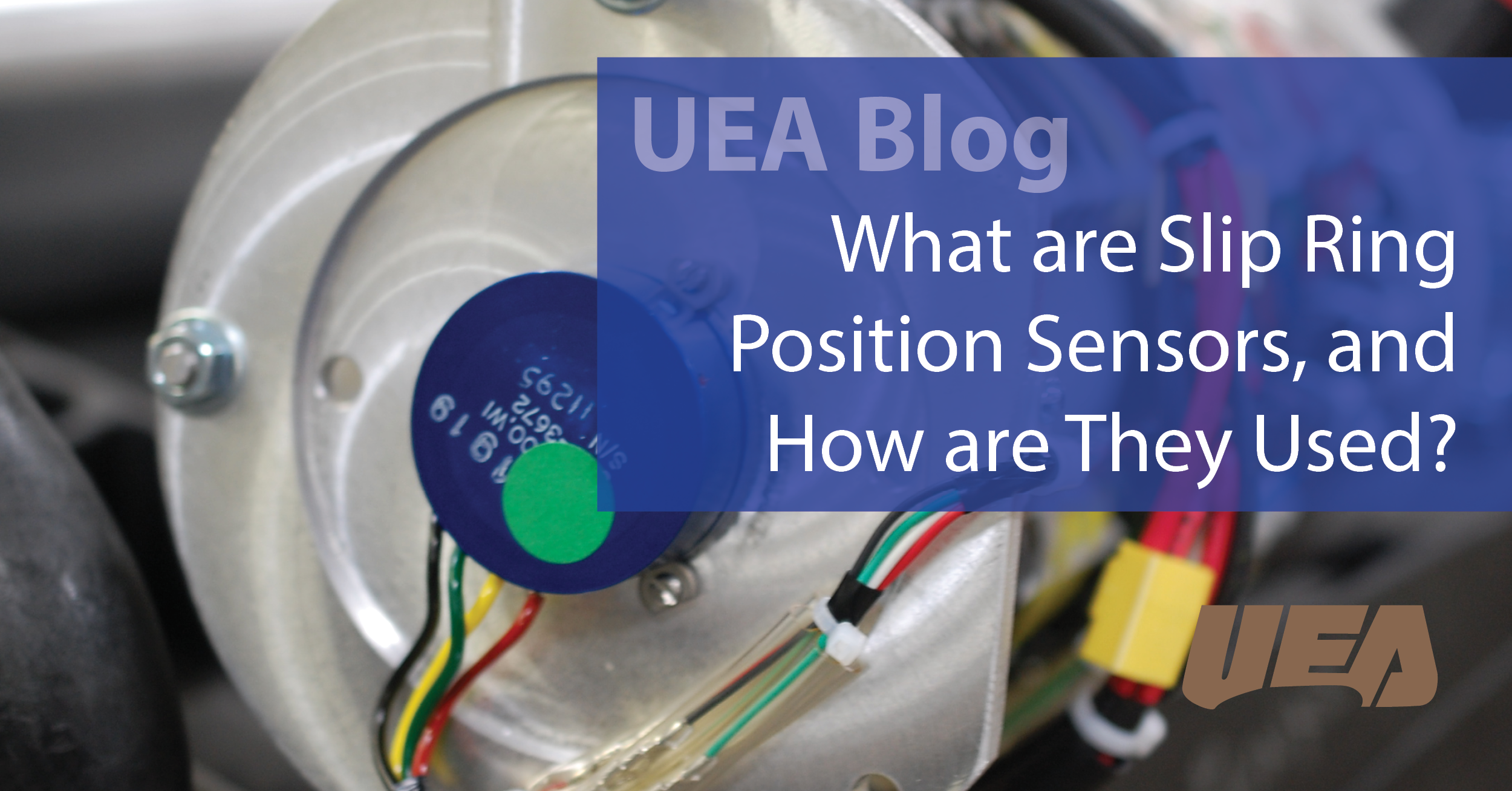
An electric slip ring assembly is used to conduct electrical power and signals throughout a continuous 360-degree rotation. In some applications, it is also important to have some means of indicating areas or specific positions within a 360-degree range of motion. This can be done in a variety of ways depending upon the actual number of positions or areas required, accuracy, and if the positions need to be set permanent or programmable. With simple applications, such as a single “home” position on a small crane, amusement ride, or indexing table, UEA can incorporate a laser-cut cam plate into the center core stack of rings and insulators in the slip rings. As the slip ring rotates, a roller on a spring-loaded arm follows the contours of the cam and actuates a small single-pole, double-throw switch. An accuracy of +/- one degree is achievable and repeatable with this design, and up to three areas can be defined over the 360-degree rotation with one cam. Another cam can be added for additional defined areas but adds additional height to the overall slip ring assembly.
For more than 25 years, UEA has offered the option of a continuous rotation potentiometer that supplies a unique signal for any point during the 360-degree rotation of the equipment. Normally supplied with a slip ring assembly, potentiometers provide an analog signal that is converted by customer-supplied software, such as a crane Load Moment Indicator (LMI) system, into a specific rotational position. The LMI system uses the rotational position, boom angle, boom extension, and weight of the part being lifted to give the operator information to fully utilize the crane capacity while keeping within the working limits. For example, when the outriggers are extended to support a crane during a lift operation, they are not normally square in pattern, a typical crane can lift more over the front and rear of the machine than over the sides, and the LMI can provide feedback to the operator. Potentiometers are a vital part of the LMI safety system for lifting, but they also provide another safety feature that is not available with the cam and switch system. Crane operators can use the potentiometer position signal to mark specific crane positions as a stop or setpoint. This feature is particularly important if the crane is working close to buildings, power lines, etc. By establishing swing limits, the LMI system automatically warns the operator if they if the boom swings close to the danger points.
As technology has continued to evolve, UEA has seen a shift from potentiometers to encoders. These are most frequently used on mobile or construction equipment with similar needs to those supplied by the potentiometers. Because this equipment operates on a Controller Area Network (CAN) communications system, the encoder becomes another sensor on the system positioned on the center of rotation. As more engine controls and remote sensors adopt the CANopen or J1939 output, the use of this type of encoder will become even more popular. In a crane application, the encoder provides precise information about the location of the boom so that the system can calculate a maximum extension for the load being lifted. Without the encoder, lifting a heavy load with the boom extended too far could cause the crane to tip over.
Learn more about the position sensors that can be incorporated into your next slip ring design.